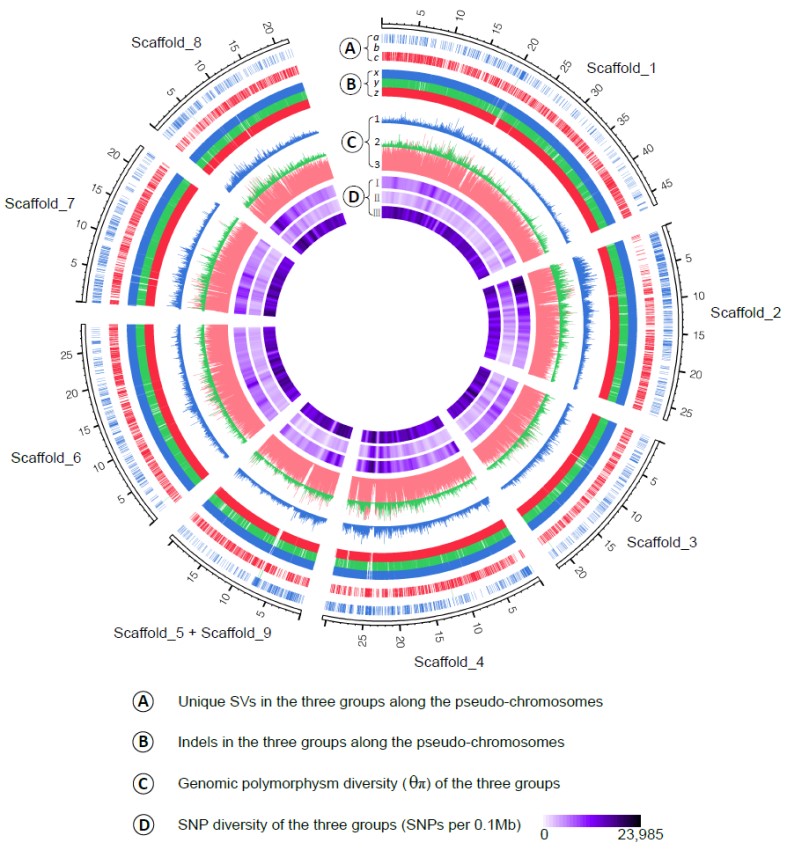Recently, researchers at the Zhengzhou Fruit Research Institute (ZFRI) of Chinese Academy of Agricultural Sciences (CAAS) have made a periodical progress on the research of peach resequencing. Through a large-scale resequencing of 10 wild and 74 cultivated peach varieties, a phylogenetic tree based on the genetic distances calculated from the genotypes at all the SNP positions of the 84 peach varieties were constructed. Meanwhile, 147 and 262 genes under edible and ornamental selection were identified, respectively. The research has been published online in the GenomeBiologyon July 31th, 2014.
According to Dr. Wang Lirong, head of the research team at the ZFRI, the cultivated population has a direct linear relationship with a single wild population, P. mira. However, the evolution path between wild and cultivated peach were unclear. Our study showed that P. mira, P. davidiana, and P. kansuensis can be clustered in to a big group, the wild related species of peach. And the closest species with peach was P. kansuensis. P. ferganensis is indistinguishable from the cultivated varieties of peach and can only be separated on geographical terms.

Moreover, there is an interesting phenomenon in peach compared with other fruit crops. Peach is thought that has a lower level of genetic variability compared to the other Prunus crops due to selfing, plus important bottlenecks in its recent breeding history. However, some variations (flat shape, glabrous surface, double flower, and colorful anther) exist in peach but not in other close fruit species, such as apricot (P. armeniaca), plum (P. salicina), apple (Malus domestica), cherry (P. avium) and grape (Vitis vinifera). Our result showed that a large number of unique SNPs in cultivated peach could explain the phenotypic variation in cultivated peach.
The resequencing data also found that there was a sharp decline in the heterozygous SNP ratio in peach during domestication. This reduction in heterozygosity most likely occurred due to inbreeding and grafting propagation. The low heterozygous SNPs ratios of peach may offer the benefits in deciphering the complicated mechanism of phenotypic character in peach. And the result also providespowerful evidence that peach could be a model fruit among all Rosaceaein molecular biology study.
More details are available on the bellow links:
http://genomebiology.com/2014/15/7/415/abstract
By Cao Ke
caoke@caas.cn
